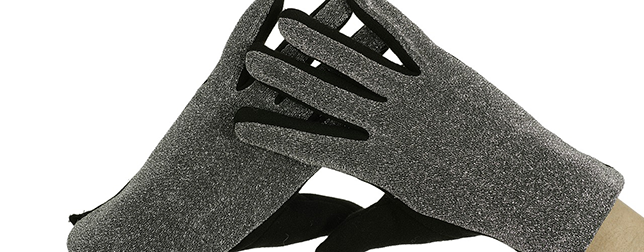A team of scientists from NYU School of Medicine in the U.S. has developed a glove-shaped MRI component which has shown the first clear images of bones, ligaments and tendons moving together.
The researchers believe the MRI glove could prove to be useful in the future diagnosis of repetitive strain injuries such as carpal tunnel syndrome. Because the new glove can show how different tissue types influence each other as they move, the team says it could also help construct a more adaptable map of hand anatomy, guide surgery in more realistic positions, or help design better prosthetics.
“Our results represent the first demonstration of an MRI technology that is both flexible and sensitive enough to capture the complexity of soft-tissue mechanics in the hand,” says lead author Bei Zhang, PhD, research scientist at the Center for Advanced Imaging Innovation and Research (CAI2R) at NYU, in a press release.
MRI (Magnetic Imaging Resonance) works by immersing tissues in a magnetic field so that any hydrogen atom present align to generate an average magnetic force in one direction in each tissue slice. These tiny magnets can be moved out of equilibrium by radio waves where they start to spin like tops and release radio signals indicating their position, which can be rebuilt into an image.

Also, basis of MRI is the ability of radiofrequency coils to convert radio waves into an electrical current. However, this means that the captured spinning radio waves produce little currents inside receiver coils, which in turn create their own magnetic fields preventing nearby coils from capturing clean signals.
Over the last 30 years, state-of-the-art MRI scanners have been developed that contain painstakingly positioned receiver coils, arranged to cancel out magnetic fields in neighbouring coils. Once the best arrangement is set, coils can no longer move relative to one another, which limits the ability of MRI to image complex moving joints.
Problem solved
The scientists sought to create a structure with high resistivity that blocks current and measures how strong the force in any magnetic waves is propelling voltage as it tries to produce a current. The MRI glove receiver coils no longer create magnetic fields that interfere with other nearby receivers. It creates images of freely moving muscles, ligaments and tendons in a hand as it performs tasks like playing piano and grabbing objects, thus eliminating the need for rigid structures.
Protons (hydrogen atoms) make up an MRI signal which means the technology can image soft tissue structures that are rich in water because each water molecule includes two hydrogen atoms. This is why MRI is ideal for imaging muscles, cartilage and nerves that is normally tougher to study with other non-invasive methods. However, tendons and ligaments are difficult to see independently because they are made of dense proteins that show up as black bands running alongside bones. With the glove, the coils showed how the black bands moved with the bones.
“We hope that this result ushers in a new era of MRI design, perhaps including flexible sleeve arrays around injured knees, or comfy beanies to study the developing brains of newborns,” says senior author Martjin Cloos, NYU Langone Health Assistant Professor.
The study was published in Nature Biomedical Engineering.












